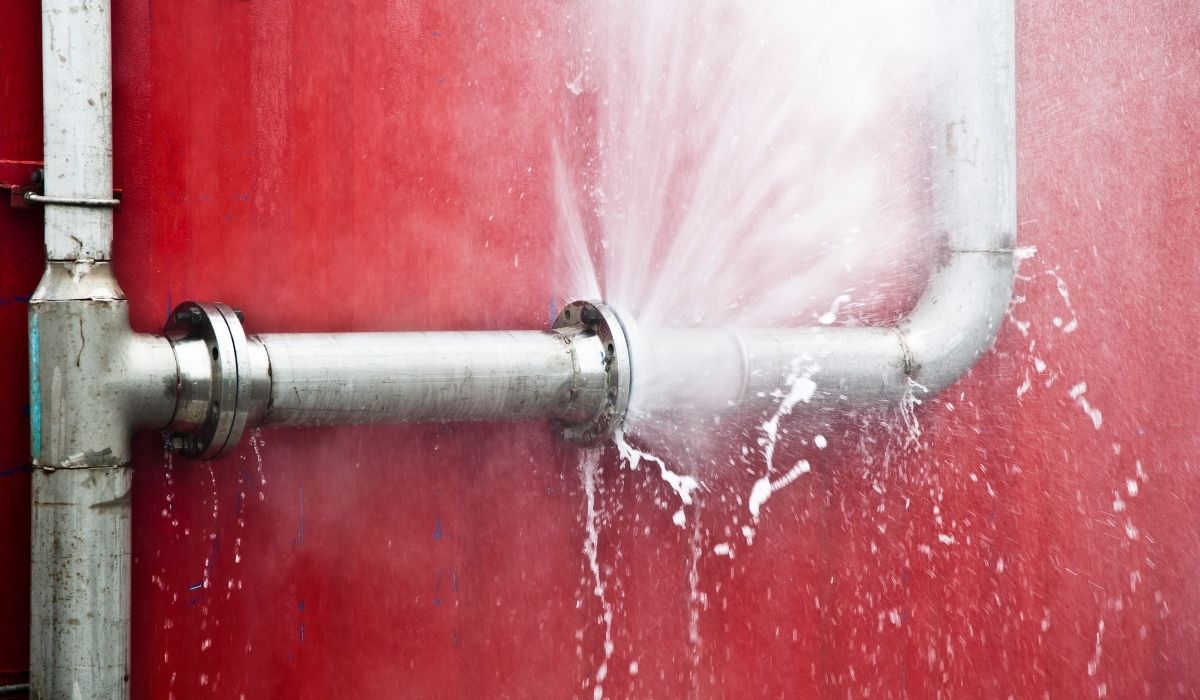Navigating Roof Leaks and Water Damage for Homeowners
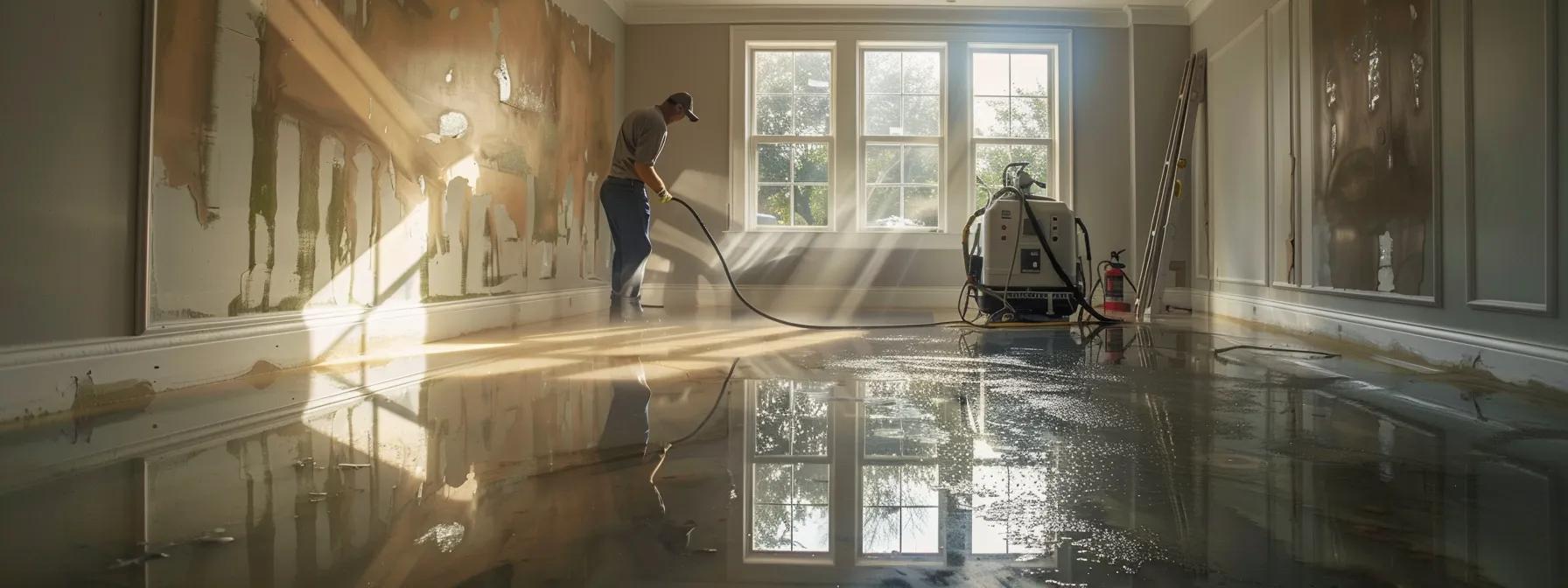
Roof Leaks and Water Damage: What Homeowners Need to Know
Roof leaks and the subsequent water damage can lead to severe structural problems, mold growth, and costly repairs if not promptly addressed. Homeowners often face issues like a leak in my ceiling, ceiling water stain, or moisture problems that signal a compromised roofing system. Identifying roof leaks early and understanding the necessary steps for repair and maintenance are crucial for long-term durability and safety. This article provides a comprehensive guide on detecting early warning signs, performing proactive inspections, and applying effective repair and preventative strategies. It covers a spectrum of topics—from recognizing interior and exterior clues to coordinating with reputable roofing contractors and handling insurance processes. In addition, the content offers actionable insights into maintenance routines that can prevent additional damages, such as damage from icing, wind, hail, or heavy rains. By integrating expert advice with detailed repair strategies, this guide serves as an essential resource for homeowners interested in preserving the longevity of their roofing system and protecting their homes from the challenges brought by leaks and water damage.
With the use of accurate visual data, lists outlining anatomical details of roof components, and real-world examples supported by recent studies, the following sections explore every essential facet of roof leak management and repair. Transitioning now to the main content, the article details each crucial area, ensuring that homeowners are well-equipped to handle roofing issues immediately as well as in the long-term.
Identifying Early Warning Signs of Roof Leaks
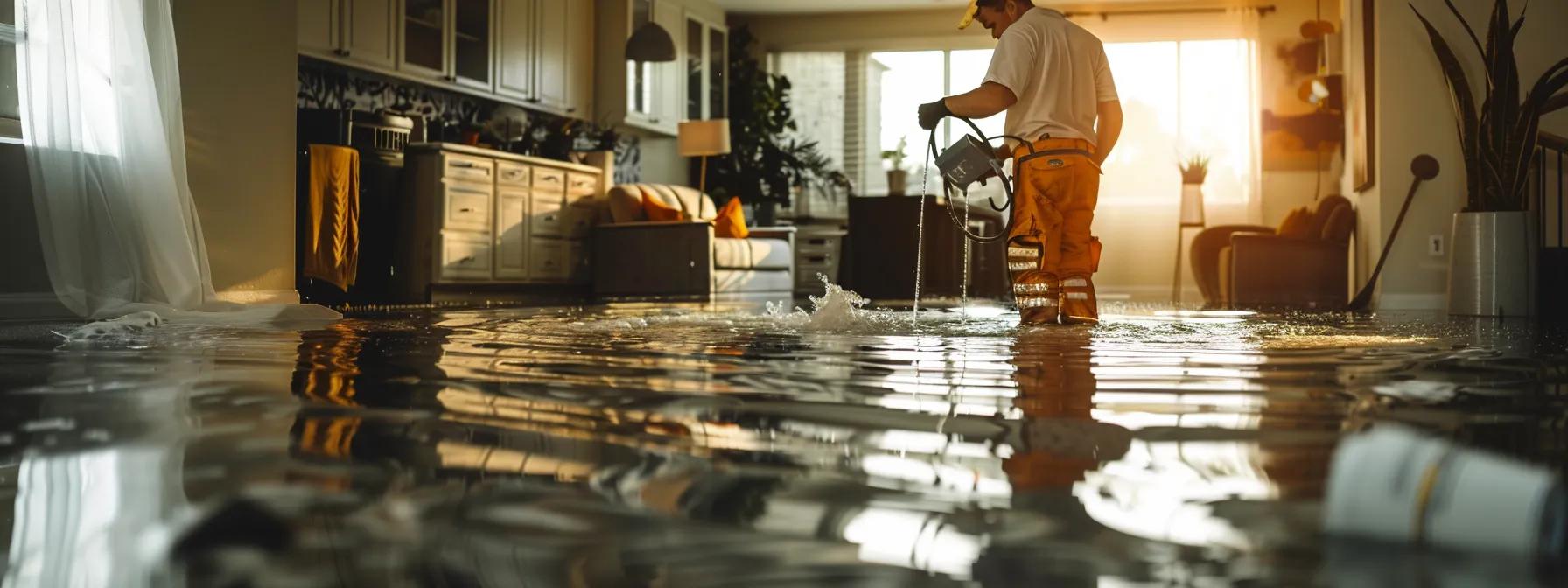
The first step in protecting your home from water damage is the early identification of roof leaks. Homeowners must look for various signs that indicate their roof may be compromised. These signs include visible water stains, sagging or buckling roof sheathing, worn roof tiles, and condensation that forms unexpectedly indoors. Being mindful of these indicators allows for timely repairs before the damage intensifies, saving money and preventing further structural deterioration.
Interior Indicators Your Roof May Be Compromised
Interior indicators are among the first clues that a roof leak exists. Homeowners may notice water stains on the ceiling, discoloration on walls, or peeling paint. When these stains appear as irregular or blotchy patches, they often signal that water is infiltrating the living space from above. In severe cases, drooping or sagging ceiling panels may be seen, which indicate heavy accumulation of moisture. Furthermore, persistent dampness or an unusual odor reminiscent of mildew can alert residents to hidden moisture behind walls. These interior signs are critical for prompting a professional roof inspection before the appearance of more damaging structural issues.
Exterior Clues Suggesting Potential Roof Leaks
Exterior examination of the roof can reveal numerous clues that signaling a leak. Homeowners should inspect for cracked or missing shingles, damaged flashing around chimneys or skylights, and debris buildup in valleys. The presence of rusted or deteriorated metal on the roof’s edge or underlayment may also indicate prolonged exposure to moisture. Additionally, granule loss from asphalt shingles can be evident from piles in the gutters. Such visible deterioration underscores potential points where the waterproof barrier has been compromised, necessitating quick intervention to prevent water intrusion during inclement weather.
Recognizing Subtle Symptoms of Hidden Roof Leaks
Not all roof leaks are immediately apparent. Some leaks are concealed behind insulation or within the structure of the roof, making detection more challenging. Subtle symptoms such as increased humidity in certain rooms, a noticeably damp attic floor, or an abnormal musty odor may all point to hidden leaks. Homeowners should be aware that even slight condensation on rafters or repeated damp spots without clear external causes could be evidence of a slow, persistent leak. These subtle issues, if left unattended, can gradually lead to significant mold growth and structural weakening, thus highlighting the importance of regular monitoring and maintenance.
How Attic Conditions Can Signal Roof Leak Problems
The attic is a critical area for detecting roof leaks before they cause major interior damage. Signs such as wet or moldy insulation, dark or stained wooden beams, or areas where the insulation has settled unevenly are strong indicators of water penetration. Homeowners should carefully inspect the attic after a heavy rain or snow melt since moisture accumulation will be most evident then. In addition, an increase in pest activity may sometimes occur as insects are attracted to damp environments. Regular attic inspections, preferably with professional assistance, can help identify these issues early and prevent minor leaks from evolving into major repair projects.
Key Takeaways: – Early warning signs include both interior and exterior indicators. – Visible damage like water stains, cracked shingles, and missing granules should be promptly investigated. – Subtle symptoms in the attic, such as moldy insulation or damp beams, are critical for early detection. – Regular attic inspections are essential for identifying hidden leaks.
Essential Roof Inspection Tips for Proactive Homeowners
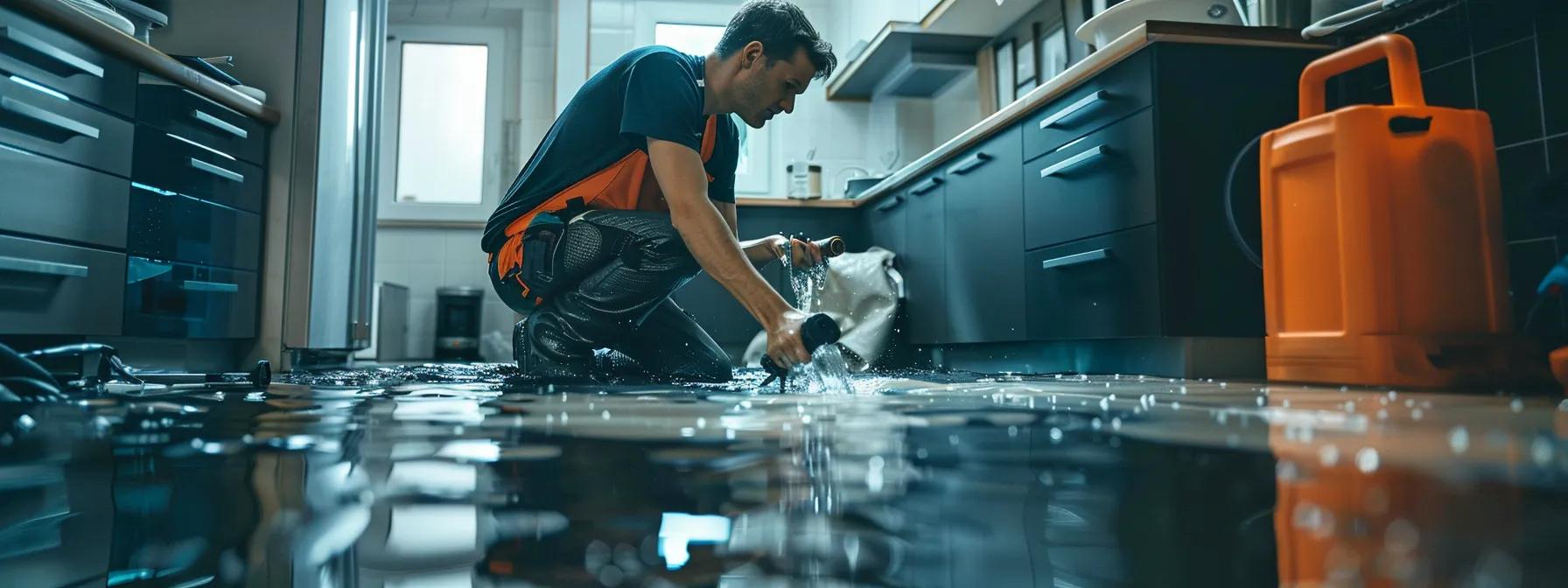
Proactive roof inspections are vital in preventing water damage and maintaining the overall integrity of your home. A thorough inspection not only identifies the current issues but also helps anticipate potential future problems related to wear and tear, weather damage, or inadequate maintenance practices. By adopting safe DIY practices, homeowners can check key areas of their roof and know when professional help is necessary. Regular inspections, especially after extreme weather events or as seasons change, ensure that minor issues do not escalate.
Performing Safe Do-It-Yourself Roof Inspection Practices
Performing a safe DIY roof inspection involves using proper equipment, such as a sturdy ladder, safety harnesses, and flashlights for adequate illumination. Homeowners should wear non-slip footwear and check the surroundings for hazards before beginning. It is best to inspect the roof during daylight hours to ensure that weather conditions do not compromise safety. When conducting the inspection, start by examining the roof surface, edges, and valleys carefully for loose or damaged shingles, debris buildup, or signs of water pooling. Always exercise caution and never attempt to walk on steep or wet surfaces to prevent injuries.
Key Areas to Focus on During Your Roof Inspection
Key inspection areas include the entirety of the roof’s surface, focusing on sections around chimneys, skylights, and vents where leaks commonly occur. Homeowners should examine the condition of shingles for curling, cracking, or missing pieces that could create openings for water. Flashing around roof penetrations is another critical focus area, as corroded or cracked flashing can quickly lead to leaks. Additionally, paying attention to the valleys where water is funneled off the roof is essential. Gutters, downspouts, and even the ridge line should be clear of debris and fully functional, ensuring proper water drainage. A meticulous and systematic approach during these checks is crucial for effective preventive maintenance.
Understanding When Professional Roof Inspection Services Are Necessary
Understanding the limitations of DIY inspections is equally important. Homeowners should know when to call in professionals—if the roof is too steep, if high temperatures or recent rain have made the surface slippery, or if signs of significant damage such as widespread shingle loss or structural sagging are observed. Professional roofing contractors have the tools, equipment, and expertise to conduct more detailed inspections, particularly for identifying hidden rot or internal water damage that might not be visible from the surface. Furthermore, professional inspections can provide a comprehensive evaluation report, aiding insurance claims and long-term maintenance planning.
Seasonal Roof Inspection Guidelines for Optimal Protection
Seasonal inspections are recommended to combat the effects of extreme weather conditions. In the spring, it is important to assess damage from winter storms and snowmelt, ensuring that any ice dams or icy residue are removed. Summer inspections should monitor for heat-related wear or UV damage to shingles, while fall inspections are essential for preparing the roof for winter conditions. These seasonal guidelines help homeowners stay ahead of potential issues and ensure that repairs or maintenance tasks are carried out before adverse weather exacerbates the problem. Each season presents unique challenges, and a proactive approach can prevent minor issues from leading to costly repairs during severe weather events.
Key Takeaways: – Use safety gear and daylight when performing DIY roof inspections. – Focus on critical areas such as chimneys, skylights, valleys, and gutter systems. – Recognize when professional inspection is necessary, especially with steep or damaged roofs. – Follow seasonal inspection guidelines to address weather-specific damage.
Effective Strategies for Addressing Roof Leak Repair
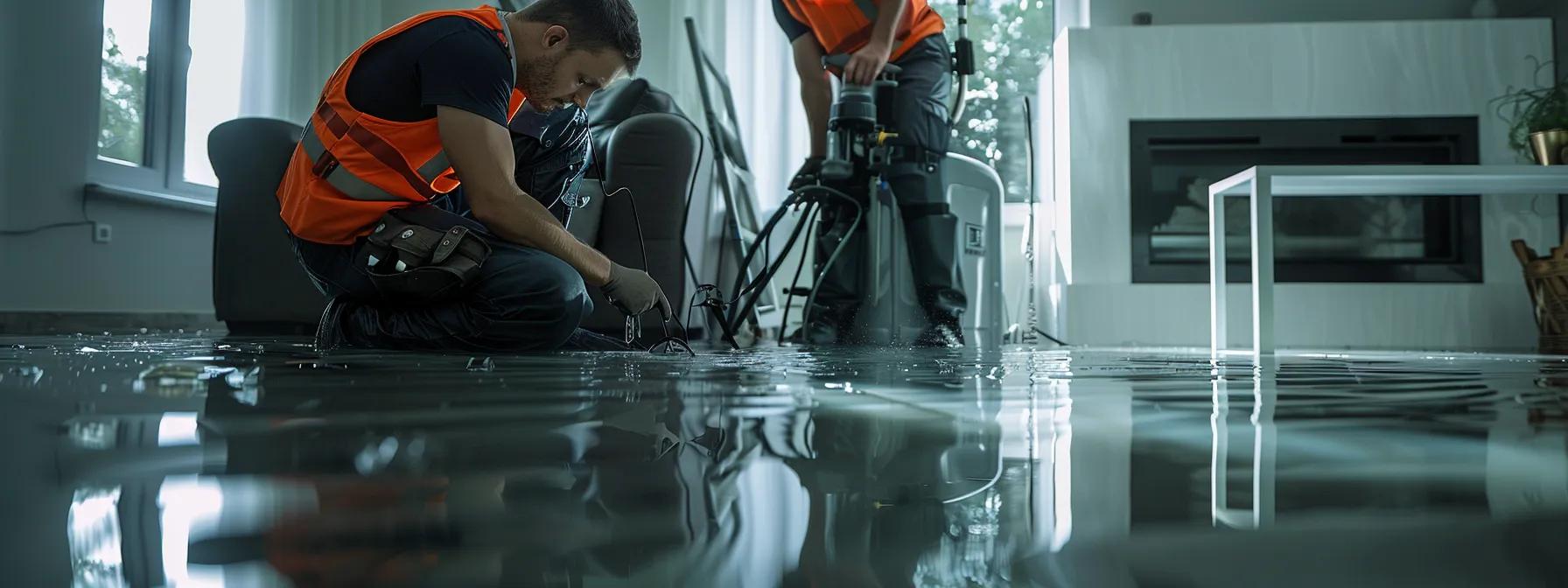
Immediately addressing roof leaks is essential to minimize water damage and preserve the structural integrity of your home. When a roof leak is identified, homeowners should take swift action to control and repair the leak to prevent further damage or mold growth. Effective strategies include both DIY methods for minor leaks and professional repairs for larger or more complicated issues. The choice of repair materials and the method used can significantly influence the longevity of the fix. By following a systematic repair process, homeowners can ensure that their roof remains a reliable barrier against water intrusion.
Immediate Steps to Control an Active Roof Leak
When an active roof leak is discovered, the first step is to stop the water flow as much as possible. Temporarily place buckets or containers to catch dripping water and use towels or plastic sheets to minimize spread into living areas. Safety precautions must be taken if accessing the roof during wet or slippery conditions; therefore, indoor mitigation, such as moving valuable items away from the area, should be prioritized until professional help arrives. Document the leak with photographs for insurance purposes, and schedule an emergency roof repair if the leak is severe. These quick measures are critical to reducing further water damage and setting the stage for permanent repairs.
Suitable DIY Methods for Minor Roof Leak Repair Tasks
For minor leaks, DIY repair methods can be effective if executed properly. Homeowners might use roofing sealant, patching materials, or roofing tape designed specifically for their shingle type and roof material. The process involves cleaning the affected area of debris, drying it thoroughly, and applying a generous amount of sealant over a small crack or hole. It is important to follow manufacturer instructions precisely and to test the repair under dry conditions before heavy rains occur. While DIY methods can provide a temporary solution, they are generally advised only for small leaks or low-risk areas, with the understanding that professional follow-up may still be necessary.
Choosing Correct Materials for Durable Roof Leak Repair
Selecting the correct repair materials is paramount for long-lasting results. Factors to consider include the type of roofing material—such as asphalt, metal, or tile—and environmental conditions like temperature fluctuations or high winds. Quality roofing sealants, patch materials, and specialized roofing tapes should be used to match the roof’s specifications. Many roofing contractors recommend using dual-layered sealants that offer both waterproofing and UV resistance. Homeowners should also consider the lifecycle of the repair materials—a repair that lasts a few months is less desirable than a solution that can endure several years. Investing in high-quality materials and following detailed repair instructions can significantly extend the roof’s lifespan.
Determining When Professional Roof Leak Repair Is Unavoidable
While DIY repairs can be a cost-effective solution for minor leaks, there are situations where professional intervention is necessary. Extensive damage, widespread leaks, or signs of structural sagging indicate that a larger problem exists that requires expert evaluation. Professional roofers are equipped to handle tasks such as replacing damaged roof tiles, repairing or reinstalling flashing, and addressing issues that span large sections of the roof. In situations where insurance claims are involved, a professional assessment is valuable for providing detailed reports and repair estimates. Understanding the scope and severity of the leak is essential for determining whether additional professional repairs are warranted.
Confirming Your Roof Leak Repair Is Successful
After repairs have been made, it is critical to ensure that they effectively prevent further leaks. Homeowners should monitor the repair area closely during the next rainstorm to confirm that no water is penetrating the roof. Additionally, re-inspecting the repaired area after several days of dry weather allows for adjustments if necessary. Some professionals recommend a follow-up inspection by a roofing contractor to assess the repair’s integrity and offer advice on preventive maintenance. Documenting the successful repair process with photos and warranty information can also prove beneficial for future insurance claims and resale values.
Key Takeaways: – Immediate leak control involves temporary measures that reduce water damage. – Minor leaks can be addressed with DIY sealant and patch repairs when done carefully. – Durable repairs depend on using high-quality, compatible materials. – Extensive or complex leaks warrant professional intervention. – Follow-up inspections and documentation are vital to confirm repair success.
Managing Consequences of Water Damage From Roof Leaks
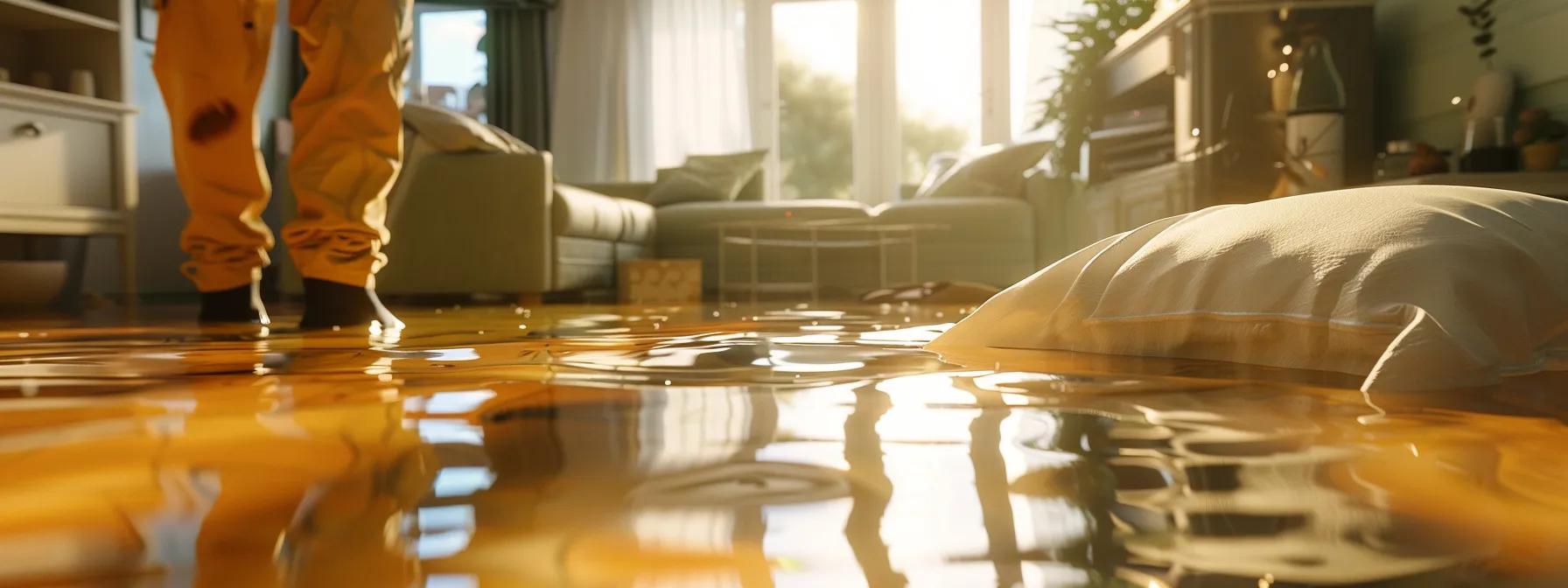
Water damage from roof leaks can lead to severe structural deterioration, mold infestations, and costly repairs. Managing these consequences promptly is paramount for homeowners. Once a leak has been addressed, it is important to assess the full extent of water damage through both visual inspections and professional evaluations. Quick action helps to mitigate health risks, such as mold growth, and ensures that the home’s structural integrity is maintained. Repairs must not only address the visible damage but also the underlying issues that may compromise flooring, ceilings, and even the electrical wiring.
Your First Actions Upon Discovering Water Damage From Roof Leaks
Immediately after discovering water damage, homeowners should act swiftly to secure the area and prevent further deterioration. The first step is to stop the water source by temporarily addressing the leak as described earlier. Next, remove any items that could be damaged by moisture from the affected area. It is advisable to begin drying out the space with fans and dehumidifiers as soon as possible. Taking photographs and documenting the damage thoroughly is essential for insurance claims and repair records. These initial actions are critical in limiting the scope of damage and streamlining the repair process.
Assessing the Full Extent of Water Damage From Roof Leaks
A comprehensive assessment of water damage involves a detailed inspection of every affected area of the home, including ceilings, walls, and flooring. Homeowners should check for signs of material deterioration such as warped wood, bubbling paint, or bulging drywall. It is also important to inspect less obvious areas like the attic or basement for hidden moisture that might contribute to mold growth. In many cases, professional water damage restoration services are required to evaluate the full extent of the damage. Using moisture meters and thermal cameras can provide accurate measurements to determine which areas have been most compromised, thereby guiding the repair strategy effectively.
Preventing Mold Infestations Following Water Damage From Roof Leaks
Mold growth is one of the most serious and health-threatening consequences of water damage. To prevent mold infestations, homeowners should start by drying the area thoroughly within 24 to 48 hours of the leak occurrence. Using dehumidifiers, fans, and proper ventilation can speed up the drying process. It is vital to remove porous materials such as carpet and insulation if they have absorbed water, as these can become prime breeding grounds for mold. In addition, applying antimicrobial treatments may help to curb the growth of mold spores. Routine monitoring and inspections should continue for several weeks after the repair to ensure that mold does not reappear.
Repairing Structural Issues Caused by Water Damage From Roof Leaks
Structural repairs address not only the immediate cosmetic damage but also the integrity of the home. Water can weaken roof rafters, floor joists, and supporting beams, sometimes leading to critical failures if left unattended. Professional contractors, often in collaboration with structural engineers, are needed to reinforce or replace damaged components. This may involve installing new supports, replacing compromised roofing materials, or using waterproofing techniques to protect the affected area. These repairs are essential to restore the strength of the building and ensure its safety for occupancy. Following the repairs, regular inspections should be scheduled to monitor the long-term stability of the structure.
Handling Insurance Processes for Water Damage From Roof Leaks
Navigating the insurance process is an important aspect of managing water damage. Homeowners should promptly contact their insurance provider to report the damage and initiate a claim. Detailed documentation, including photographs and written records of the damage, repairs, and professional assessments, will support the claim. It is also advisable to obtain multiple repair estimates and provide these to the insurer. Understanding the policy details, such as deductibles and coverage limits, can help homeowners set realistic expectations for reimbursement. Clear communication with both the repair contractors and insurance adjusters is crucial in ensuring that the entire process runs smoothly and that the homeowner is adequately compensated for the damage.
Key Takeaways: – Immediate actions include water containment, item removal, and thorough documentation. – Detailed assessments identify both visible and hidden water damage. – Prompt drying and antimicrobial treatments prevent dangerous mold growth. – Structural repairs must be carried out by professionals to ensure safety. – Effective insurance claim handling requires meticulous documentation and clear communication.
Implementing Preventative Tactics Against Roof Leaks and Water Damage
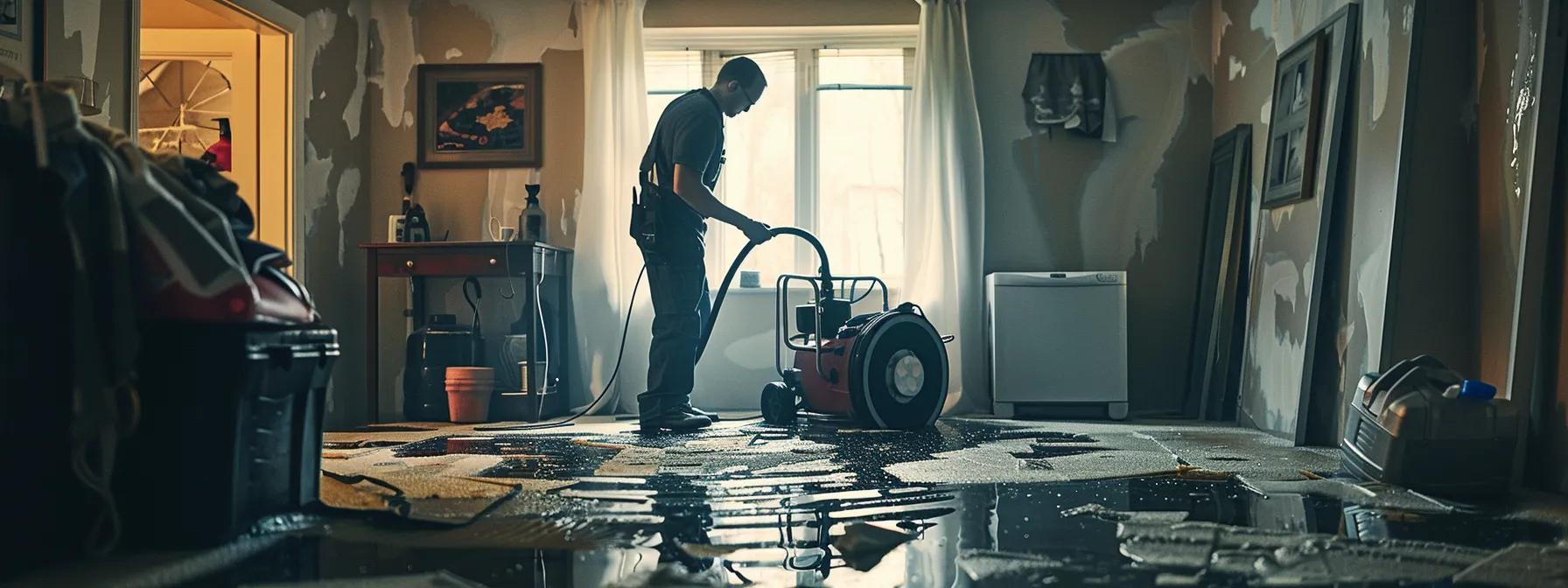
Prevention is always better than cure, especially when it comes to roof leaks and the subsequent water damage. Implementing a consistent preventative maintenance strategy can significantly reduce the risks associated with long-term exposure to moisture. Regular upkeep not only extends the lifespan of the roof but also minimizes emergency roof repairs caused by unexpected leaks or inclement weather. Homeowners are encouraged to adopt a proactive stance—understanding their roofing materials’ lifespans, performing routine gutter cleaning, and reinforcing the roof in anticipation of severe weather conditions.
Creating a Consistent Roof Maintenance Routine
Establishing a regular maintenance routine is essential to prevent leaks. Homeowners should schedule inspections at least twice a year—once during the spring after winter storms and again in the fall before winter sets in. A comprehensive maintenance routine includes checking for broken or missing shingles, assessing the condition of flashings and sealants, and cleaning gutters to promote proper drainage. Regular inspections also allow for early detection of issues such as minor wear, rust, or granule loss. Maintaining a detailed log of inspections, repairs, and maintenance tasks can help track the roof’s condition over time and ensure that necessary measures are taken before small problems escalate.
The Importance of Clean Gutters in Averting Roof Leaks
Gutters play a critical role in directing rainwater away from the roof and foundation. Clogged gutters prevent proper drainage, leading to water pooling on the roof and creating constant stress on roofing materials. Homeowners should clean gutters at least twice a year, or more often if trees are nearby. Remove leaves, twigs, and debris that may block the flow of water, and inspect downspouts to ensure they are unobstructed. Properly installed gutter guards can also be an effective way to reduce the frequency of maintenance. Regular gutter maintenance not only protects the roof but also prevents potential damage to the fascia and the overall structure of the home.
Knowing Your Roofing Material's Lifespan and Replacement Cues
Understanding the lifespan of your roofing material is essential for long-term home maintenance. Different roofing materials, such as asphalt shingles, metal, wood, or tile, have varying durability and maintenance requirements. For example, asphalt shingles typically require replacement every 15 to 30 years, while metal roofs can last upwards of 50 years with proper care. Homeowners should familiarize themselves with the typical signs of aging for their specific roofing material, such as curling, cracking, or granule loss on asphalt shingles. Recognizing these cues allows for timely replacement or repair, which can prevent minor issues from becoming major leaks. Regular consultations with roofing contractors can also provide insights into the best practices for maintaining roof integrity based on material type and local weather conditions.
Fortifying Your Roof Against Inclement Weather
Fortifying the roof helps it withstand severe weather events including high winds, heavy rain, hail, and snow. This may involve reinforcing roof trusses, replenishing the protective sealant on seams, and ensuring that roof flashing is secure and intact. In regions prone to extreme weather, installing impact-resistant materials can further reduce potential damage. For example, metal roofs and specially treated tiles are designed to resist hail and wind gusts better than conventional materials. Regularly updating the roofing system with advanced waterproofing coatings and sealants enhances its overall resilience. Implementing these preventative measures ensures that the roof not only performs well during typical weather patterns but also offers robust protection during emergency roof repairs and severe weather conditions.
Key Takeaways: – Establish a bi-annual roof maintenance routine to stay ahead of potential issues. – Clean gutters regularly to ensure efficient water drainage and reduce roof stress. – Be aware of the lifespan and warning signs for your specific roofing material. – Fortify your roof with advanced sealants and impact-resistant materials to handle inclement weather.
Obtaining Expert Help for Roof Leaks and Associated Water Damage
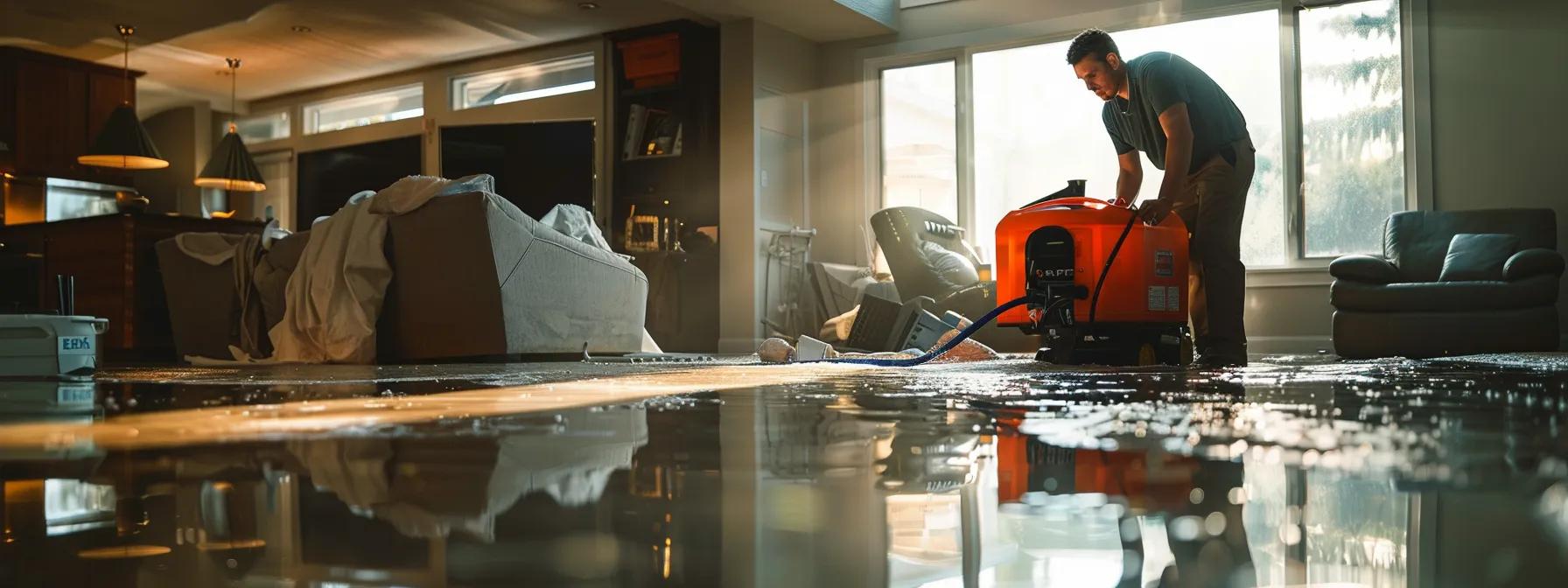
When roof leaks escalate beyond simple repairs, obtaining expert help is essential. Roofing contractors provide a level of expertise and safety that DIY methods cannot match, especially when handling complex repairs or negotiating insurance claims. Professional contractors not only perform thorough inspections but also offer comprehensive repair solutions using high-quality materials suited to the roofing system’s unique requirements. Working with reputable experts further ensures that repair quotes are competitive and that warranty terms are clearly understood, reducing the risk of future leaks.
Locating and Evaluating Reputable Roofing Contractors
Finding the right roofing contractor begins with thorough research. Homeowners should seek recommendations from friends, family, or neighbors who have previously handled similar repairs. Online reviews, Better Business Bureau ratings, and local trade associations offer additional insights into a contractor’s reputation. It is vital to request multiple estimates before making a decision, ensuring that the repair cost reflects the quality of work and materials provided. Contractors who provide a detailed assessment report, complete with photographs and a clear repair plan, are preferable. Establishing a clear line of communication and verifying proper licensing and insurance further sets reputable contractors apart from less reliable options.
Crucial Inquiries to Pose to a Potential Roofer
Before hiring a roofing contractor, homeowners should ask critical questions to gauge expertise and reliability. Inquiries should include questions about the contractor’s previous experience with similar roof types, the estimated timeline for repairs, and the warranty offered on both labor and materials. Understanding the scope of work, payment terms, and any potential hidden costs is paramount. Additionally, ask for references or case studies that demonstrate the contractor’s ability to handle complex repairs. These questions help ensure that the contractor is not only proficient but also transparent and accountable, which is essential for managing both immediate repairs and long-term roof maintenance.
Interpreting Repair Quotes and Understanding Warranty Terms
Interpreting repair quotes requires a clear understanding of the breakdown of costs involved. Homeowners should request quotes that itemize labor, materials, disposal fees, and any additional charges such as permits or cleanup costs. Compare these quotes carefully, focusing on both price and the comprehensiveness of the service offered. Equally important is understanding the warranty terms provided by the contractor—this includes the duration of the warranty, what exactly it covers, and any conditions that could void the guarantee. A well-structured warranty indicates that the contractor stands behind the quality of their work, offering peace of mind for long-term protection against future leaks.
Collaborating With Insurance Adjusters for Roof Leak Incidents
Collaboration with insurance adjusters can often be a challenging aspect of roof leak repairs. Homeowners should prepare detailed documentation, including inspection reports, photographs of the damage, and repair estimates from reputable contractors. Open and transparent communication with the insurance company helps clarify what is covered under the policy and expedites the claims process. It is beneficial to work with a contractor experienced in handling insurance claims, as they can provide expert guidance and negotiate on your behalf. This collaboration ensures that the repair costs are adequately covered and minimizes the financial burden on the homeowner while restoring the roof to optimal condition.
Key Takeaways: – Research and evaluate roofing contractors using local recommendations and online reviews. – Ask detailed questions regarding experience, timeframes, warranties, and cost breakdowns. – Carefully analyze repair quotes and understand all warranty terms before proceeding. – Collaborating effectively with insurance adjusters and using documented evidence can expedite the claims process.
Conclusion
In conclusion, addressing roof leaks and water damage begins with early detection and proactive maintenance. Homeowners need to recognize both subtle and overt signs of roof deterioration and act swiftly by employing both DIY methods and professional evaluations when necessary. A consistent inspection routine, combined with preventative strategies like gutter cleaning and material updates, goes a long way in ensuring long-term roofing durability. Moreover, obtaining expert help through reputable roofing contractors and understanding the insurance claim process are critical elements in restoring and maintaining roof integrity. With these actionable insights, homeowners can better safeguard their properties from the adverse effects of moisture, emergency roof repairs, and costly structural damage.
Frequently Asked Questions
Q: What are the first indicators of a roof leak in my home? A: The initial signs include water stains on the ceiling, peeling paint, damp insulation, and a musty odor. These symptoms indicate water infiltration from the roof and should prompt an immediate inspection to prevent further damage.
Q: How often should I perform a roof inspection? A: It is recommended to inspect your roof at least twice a year—once in the spring to assess winter damage and once in the fall before the cold season. Regular inspections help identify small issues before they develop into major failures.
Q: Can I handle roof leak repairs on my own? A: DIY repairs can be effective for minor issues; however, extensive damage or leaks in hard-to-reach areas should be repaired by experienced roofing contractors. Professional help ensures that the correct materials are used and the repair lasts over time.
Q: What steps should I take after discovering water damage from a roof leak? A: Immediately mitigate further damage by containing the leak and drying out the affected areas. Document the damage for insurance claims, then conduct a thorough assessment to determine if professional restoration is needed. This process helps prevent mold growth and structural deterioration.
Q: How do I choose the right roofing contractor for repairs? A: Research local contractors by seeking referrals, reading online reviews, and comparing multiple estimates. Ask crucial questions regarding their experience, repair process, warranty terms, and previous work. This ensures you hire a qualified professional who can deliver lasting repairs.
Q: What maintenance practices can prevent future roof leaks? A: Regular cleaning of gutters, routine inspections, prompt repair of minor damages, and knowledge of your roofing material’s lifespan are key practices. Additionally, fortifying your roof with weather-resistant materials can significantly reduce the risk of leaks during severe weather.
Q: How does proper roof maintenance affect homeowners insurance? A: Well-maintained roofs reduce the likelihood of claims and may lead to lower insurance premiums. Regular documentation of repairs and maintenance can also support insurance claims if water damage occurs, ensuring smoother processing and reimbursement.
Final Thoughts
Addressing roof leaks and water damage requires a vigilant approach and a commitment to regular maintenance and timely repairs. Homeowners benefit from early warning signs, comprehensive inspections, effective repair strategies, and expert contractor collaboration. By following the preventive tactics and repair guidelines outlined in this article, the longevity and integrity of the roofing system can be safeguarded. Taking proactive steps today can significantly reduce the risk of future emergency roof repairs and costly water damage restoration.



